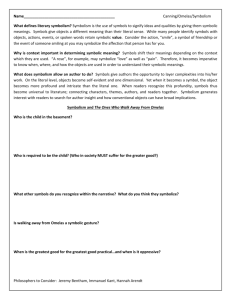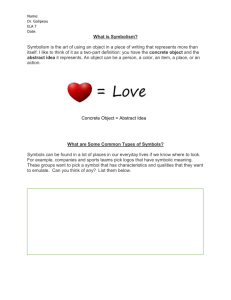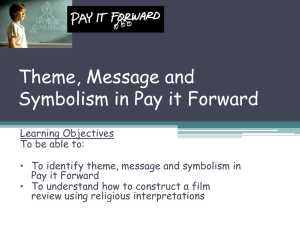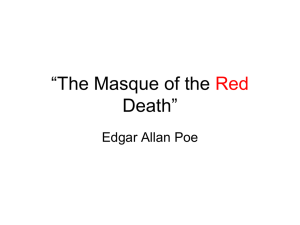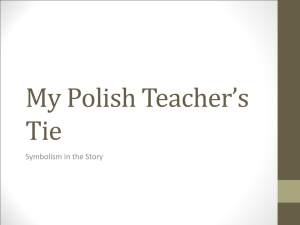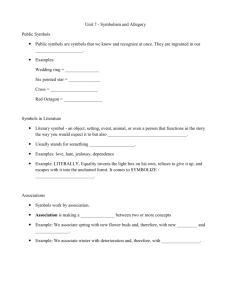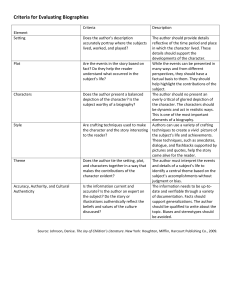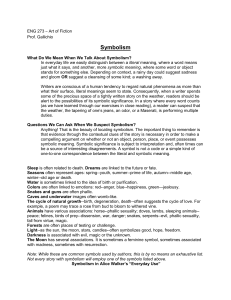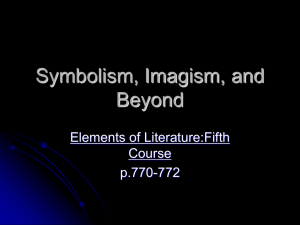symbol - Neville High School
advertisement
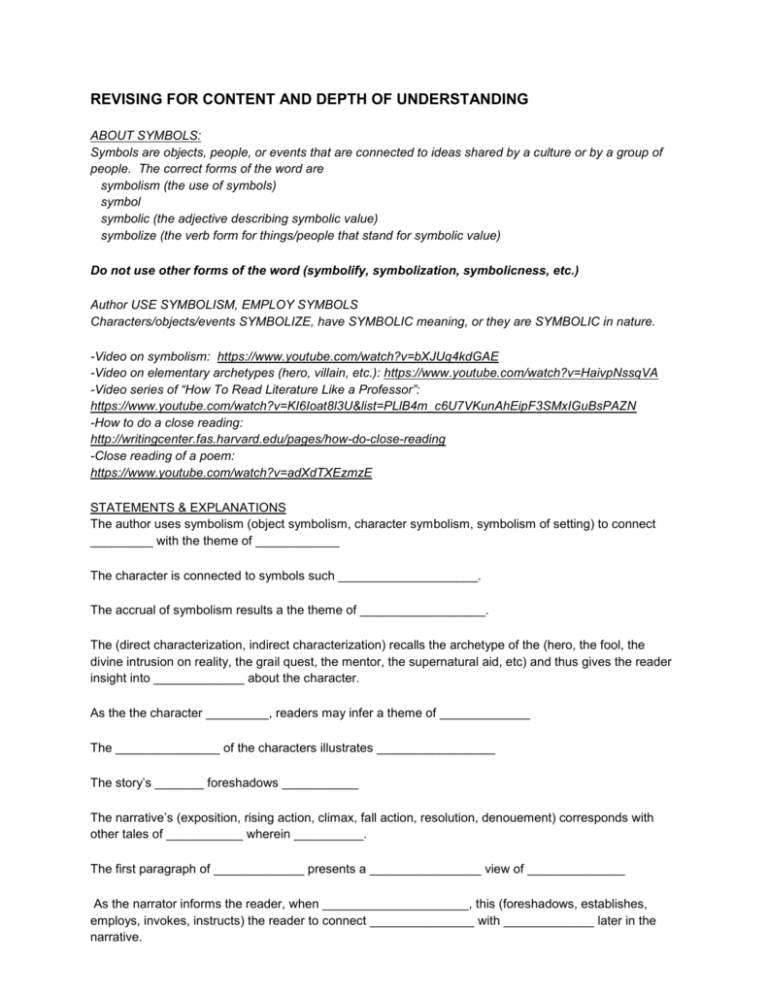
REVISING FOR CONTENT AND DEPTH OF UNDERSTANDING ABOUT SYMBOLS: Symbols are objects, people, or events that are connected to ideas shared by a culture or by a group of people. The correct forms of the word are symbolism (the use of symbols) symbol symbolic (the adjective describing symbolic value) symbolize (the verb form for things/people that stand for symbolic value) Do not use other forms of the word (symbolify, symbolization, symbolicness, etc.) Author USE SYMBOLISM, EMPLOY SYMBOLS Characters/objects/events SYMBOLIZE, have SYMBOLIC meaning, or they are SYMBOLIC in nature. -Video on symbolism: https://www.youtube.com/watch?v=bXJUq4kdGAE -Video on elementary archetypes (hero, villain, etc.): https://www.youtube.com/watch?v=HaivpNssqVA -Video series of “How To Read Literature Like a Professor”: https://www.youtube.com/watch?v=KI6Ioat8l3U&list=PLlB4m_c6U7VKunAhEipF3SMxIGuBsPAZN -How to do a close reading: http://writingcenter.fas.harvard.edu/pages/how-do-close-reading -Close reading of a poem: https://www.youtube.com/watch?v=adXdTXEzmzE STATEMENTS & EXPLANATIONS The author uses symbolism (object symbolism, character symbolism, symbolism of setting) to connect _________ with the theme of ____________ The character is connected to symbols such ____________________. The accrual of symbolism results a the theme of __________________. The (direct characterization, indirect characterization) recalls the archetype of the (hero, the fool, the divine intrusion on reality, the grail quest, the mentor, the supernatural aid, etc) and thus gives the reader insight into _____________ about the character. As the the character _________, readers may infer a theme of _____________ The _______________ of the characters illustrates _________________ The story’s _______ foreshadows ___________ The narrative’s (exposition, rising action, climax, fall action, resolution, denouement) corresponds with other tales of ___________ wherein __________. The first paragraph of _____________ presents a ________________ view of ______________ As the narrator informs the reader, when _____________________, this (foreshadows, establishes, employs, invokes, instructs) the reader to connect _______________ with _____________ later in the narrative. The key symbols in the story reinforce its main theme: _____________________ The text demands that the reader ________________ When _____________ writes ______________, he/she implies _______________. As the character “_________________,” he/she ________________. __________________ description of _________________ present a setting that is ____________________. The _______________ establishes a very important ________________ The "________________________” (environment, setting, action) suggests that ______________________. The (type of figurative language) used to describe __________________ tells us that (name of character, tone, mood, atmosphere) is ________________. EVIDENCE AND CONNECTIONS When “______________” foreshadows _____________ later in the story, readers may note the author’s concern with _________________. The ________________ symbolism connected with ________________ is repeated later as ________________. The repetition of __________________ implies the author’s concern with __________________. The _________________ alludes to ___________________ in the (story, parable, tale, historical event) wherein ________________. Throughout the narrative the presence of ____________________ creates the larger (theme, impression, paradigm) of __________________. The _______________ point of view allows the reader insight into __________________. The (specific character’s action) is a ________________ attempt to (describe interpretive reading). Example: The boys find the grinding ball, but later attempt to bury it. Burying it is their futile attempt to make time stand still and to preserve perfection. When “(description of character’s action),” the reader becomes aware of (interpretive statement about the character’s typology or role). Ex: When he gives the girls "that sad Sunday-school-superintendent stare," the reader becomes aware of Lengel‟s character as the A & P's version of a dreary bureaucrat who "doesn't miss much" (487)
